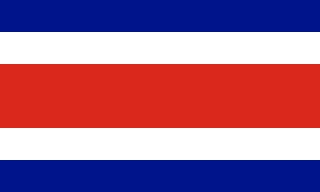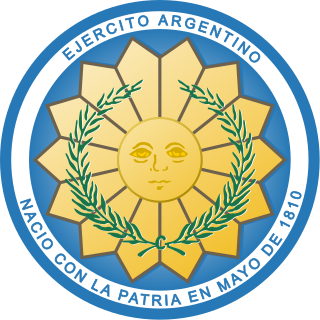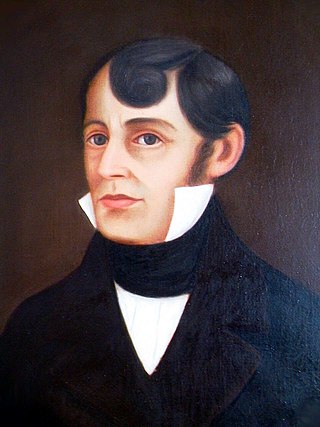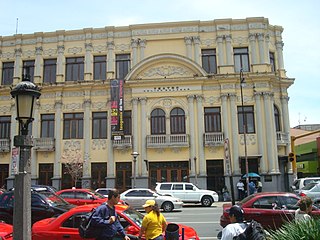
Costa Rica, officially the Republic of Costa Rica, is a country in the Central American region of North America. Costa Rica is bordered by Nicaragua to the north, the Caribbean Sea to the northeast, Panama to the southeast, and the Pacific Ocean to the southwest, as well as maritime border with Ecuador to the south of Cocos Island. It has a population of around five million in a land area of 51,060 km2 (19,710 sq mi). An estimated 333,980 people live in the capital and largest city, San José, with around two million people in the surrounding metropolitan area.

The Public Force of Costa Rica is the Costa Rican national law enforcement force, which performs policing and border patrol functions.

The Civil Guard is the oldest law enforcement agency in Spain and is one of two national police forces. As a national gendarmerie force, it is military in nature and is responsible for civil policing under the authority of both the Ministry of the Interior and the Ministry of Defence. The role of the Ministry of Defence is limited except in times of war when the Ministry has exclusive authority. The corps is colloquially known as the benemérita (reputable). In annual surveys, it generally ranks as the national institution most valued by Spaniards, closely followed by other law enforcement agencies and the armed forces.

The Legislative Assembly forms the unicameral legislative branch of the Costa Rican government. The national congress building is located in the capital city, San José, specifically in Carmen district of the San José canton.

The Structure of the Argentine Army follows below. As of 2020 the active force of the Argentine Army includes a total of eleven brigades:

The Carabineros was an armed carabiniers force of Spain under both the monarchy and the Second Republic. The formal mission of this paramilitary gendarmerie was to patrol the coasts and borders of the country, operating against fraud and smuggling. As such the Carabineros performed the dual roles of frontier guards and customs officials.

The following outline is provided as an overview of and topical guide to Costa Rica:
This is an order of battle of the Chilean Army.
Civil Guard of Costa Rica was a gendarmerie type force responsible for both limited national defense and internal security missions.

The Constitution of Costa Rica is the supreme law of Costa Rica. At the end of the 1948 Costa Rican Civil War, José Figueres Ferrer oversaw the Costa Rican Constitutional Assembly, which drafted the document. It was approved on 1949 November 7. Several older constitutions had been in effect starting from 1812, with the most recent former constitution ratified in 1871. The Costa Rican Constitution is remarkable in that in its Article 12 abolished the Costa Rican military, making it the second nation after Japan to do so by law. Another unusual clause is an amendment asserting the right to live in a healthy natural environment.

The modern Mexican Legion of Honor is an order of merit awarded to soldiers, veterans, and others who have made outstanding contributions to the national defense, security, or sovereignty of Mexico. An earlier, post-revolutionary version was organized as a military reserve force.

The First Costa Rican Republic is the name given to the historical period between the proclamation of the Republic of Costa Rica in the 1848 reformed Constitution and the official decree by then President José María Castro Madriz on 31 August 1848 and the Costa Rican Civil War of 1948 which ended with the enactment of the current 1949 Constitution on 7 November 1949 starting the Second Costa Rican Republic.

The Fundamental Law of the Free State of Costa Rica, sometimes called the Political Constitution of 1825, was issued on January 25, 1825 by the Constituent Congress of the State of Costa Rica and during a time the country was a formal member of the Federal Republic of Central America. It would function until it was abrogated by Braulio Carrillo Colina who in 1838 takes power in a dictatorial manner and issues on March 8, 1841 the Decree of Basis and Guarantees that will operate as a de facto constitution until the arrival of Francisco Morazán in 1844 who overthrew Carrillo and was temporarily restored.
The article 75 of the Constitution of Costa Rica establishes Catholicism as the country's state religion making Costa Rica the only state in the Americas to do so. Current debate about the issue and the passing toward a full secular state are in the public and political debate. This article is also the only one in the Title VI, only chapter of the Constitution dealing with religion.

The Founding Junta of the Second Republic was a de facto government which existed in the Republic of Costa Rica from May 8, 1948, to November 8, 1949, with the overthrow of the constitutional president Teodoro Picado Michalski, by a group of revolutionaries headed by José Figueres Ferrer.

The Dictatorship of the Tinoco brothers, also Tinochist or Peliquist Dictatorship, or Tinoco regime is the period of Costa Rica in which the military dictatorship led by Federico Tinoco Granados as de facto president and his brother José Joaquín Tinoco Granados as Minister of War was in place. It began after the 1917 Costa Rican coup d'état on January 27, 1917 and culminated with the departure of Tinoco from Costa Rica to France on August 13, 1919 three days after the murder of his brother and after a series of armed insurrections and massive civil protests known as the Sapoá Revolution and the 1919 student civic movement.

The coup d'état of April 27, 1870 in Costa Rica was a coup implemented by the military leadership led by Tomás Guardia Gutiérrez and it established, to a large extent, the inauguration of the Liberal State. It also enacted the Costa Rican Constitution of 1871, the longest in Costa Rican history as it remained in force until 1948.
Antisemitism in Costa Rica refers to the anti-Jewish sentiment and prejudice in the Republic of Costa Rica.
The Plaza de la Democracia, officially Plaza de la Democracia y de la Abolición del Ejército is a public plaza located in San José, Costa Rica, the national capital of Costa Rica. The plaza is located directly in front of the national congress building, which houses the Legislative Assembly of Costa Rica, and is flanked by the Museo Nacional de Costa Rica and the Museo del Jade.















